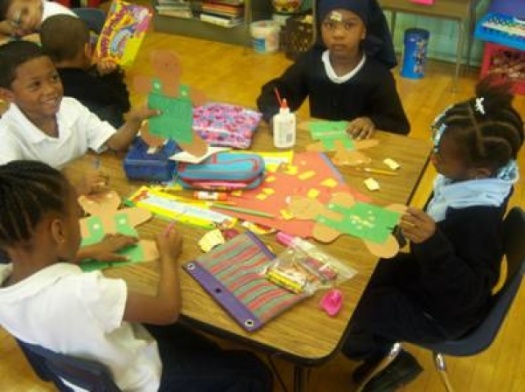
Jan. 2, 2012 marks the 50th anniversary of what is considered to be the first formal protest against segregated and unequal schools in Chicago. A 1962 sit-in at Burnside Elementary School, 650 E. 91st Pl., involved 17 mothers and 27 students who protested
@font-face { font-family: “Times New Roman”; }@font-face { font-family: “Verdana”; }p.MsoNormal, li.MsoNormal, div.MsoNormal { margin: 0in 0in 0.0001pt; font-size: 12pt; font-family: “Times New Roman”; }table.MsoNormalTable { font-size: 10pt; font-family: “Times New Roman”; }div.Section1 { page: Section1; }
Jan. 2, 2012 marks the 50th anniversary of what is considered to be the first formal protest against segregated and unequal schools in Chicago. A 1962 sit-in at Burnside Elementary School, 650 E. 91st Pl., involved 17 mothers and 27 students who protested segregated and shamefully overcrowded schools.
The sit-in was led by Alma Coggs who had been president of the Burnside PTA from 1960 to 1961. She was also treasurer of the Chicago Committee for Equal Education and active in a 1961 desegregation suit against the Board of Education.
Determined mothers led the protest and had kept abreast of the non-violent Civil Rights Movement of the South and knew that sit-in demonstrations had successfully led to integrated lunch counters in Greensboro, N.C. and Nashville, Tenn.
Burnside parents were hopeful that the sit-in strategy would lead to integrated schools in Chicago.
They inspired support from ministers, civil rights workers and Freedom Riders who had risked their lives in the South the year before. This spark ignited protests against the Willis Wagons and eventually led to the 1963 citywide boycott of Chicago Public Schools.
It was in this climate that grassroots parents took direct action to integrate schools. Burnside was so crowded that students went to school on a double-shift, some starting in the early morning while others started much later.
Classes were even held in the auditorium, on the stage and in the auditorium seats at the same time.
An addition was built on Gillespie School, 9301 S. State St., to accommodate the overcrowded schools, but it was a mile and a half away for some Burnside students.
A few blocks from Burnside was Perry Elementary School. Perry was east of Cottage Grove on 92nd and University. Perry had almost all white students. The five or six African-American students who attended Perry were blind students. There was no school for the blind in 1962 so students were bused from around the city to a few designated schools. The African-American students who lived close to Perry School could not attend because it was reserved for white students. When Burnside parents visited Perry School they saw empty classrooms. Parents felt if the African-American students who lived close to Perry were allowed to attend, it would relieve some of the overcrowding at Burnside.
In the end, the students and parents lost the battle, but it started a direct action movement against segregated schools across the city and a citywide boycott the following year where over 250,000 students stayed home in October 1963.
Photo: Current Burnside students.